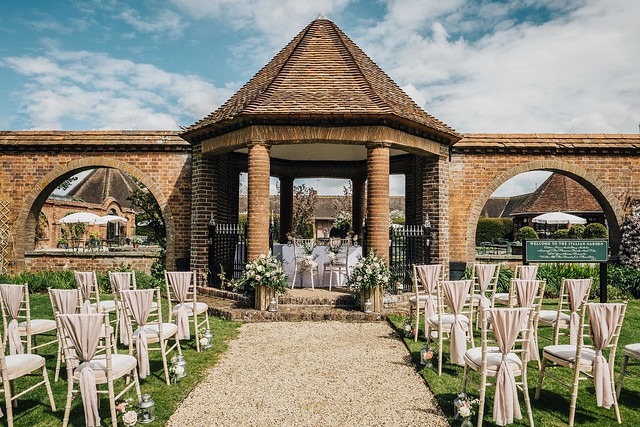
Wedding Traditions Explained
Wedding traditions explained
There are many things people expect to see at a wedding. The majority of wedding day traditions are second nature, and no one questions the origin. Many traditions such as the bouquet toss and cutting the wedding cake. In this blog, we will be exploring (the sometimes weird) origins of wedding traditions.
Father gives away the bride
Starting off with one wedding tradition that most people know the origin of. The act of a father that walks down the aisle with his daughter is always a tender moment. In fact, in modern weddings, a variety of wedding guests close to the bride have the honour of “giving her away,” if it’s not the brides father. It can be a heartfelt way of thanking someone who brought you up or played a huge role in your life.
It’s also nice to have someone you trust close to you in the lead up to the big moment. Originally, the father would walk his daughter down the aisle to literally give her to the groom. This was a transactional action where the bride was given away for a price or dowry.
The Bells
We all love to hear the sound of wedding ceremony bells. But the origin of this wedding tradition is slightly more sinister than a happy song. Wedding bells were originally used to ward off evil spirits, which is a common theme in old marriage traditions. Several of these originated from the idea of keeping away evil from the ceremony and protecting the bride and groom to offer them good fortune.
Best Man and Bridesmaids
Getting your family and friends involved in your wedding is an uplifting experience. Having those closest to you around you when tying the knot makes the day even more special. But the origin of the best men and bridesmaids is pretty strange. This original concept of a best man came from the idea that the bride must be stopped from escaping.
The best man essentially had to keep his eye on her and literally kidnap her if need be. Meanwhile, the wedding tradition of bridesmaids wearing the same outfits is to act as a distraction technique for evil spirits. Traditionally the bridesmaids wore the same as the actual bride so it would confuse the spirits even further. These days, it’s just a nice touch to see the bridesmaids matching and not wearing white as a contrast against the bride’s white wedding dress.
The Veil
The veil is a common accessory within the bridal industry and a well known wedding tradition. It can accompany a tiara or stand-alone, and generally looks stylish and elegant. It’s not often you see a veil covering the whole face anymore as it seems to be less popular with modern brides.
Veils originated from the times when arranged marriages were very common. The groom wouldn’t get to see his bride to be until the very last second, and by then it would be too late to back out.
The Rhyme
A wedding traditions list wouldn’t be complete without the old favourite. “Something old, something new, something borrowed and something blue.” Each item was supposed to bestow something upon the new couple and bless the marriage.
Something old was seen as a representation of continuity, a common wedding theme. Similarly, something new was a symbol of a new start and optimism for the future. The something borrowed was traditionally meant to be from an already happily married couple, for good luck. Finally, something blue was a representation of purity and love between the couple.
Ring Finger
In the West, wedding rings are typically worn on the left hand, on your fourth finger. This tradition originated because it was believed that this finger has a vein running directly to your heart. This is certainly one of our favourite origins!
If you’re looking to tie the knot and need the perfect wedding venues in Oxfordshire, look no further than Milton Hill House. Our fantastic Georgian Manor in Oxford is the ideal place to have your big day. Surrounded by a sweeping drive, landscaped Italian gardens and beautiful vistas, we’ll be sure to make your occasion extra special. Get in contact with our friendly team today for more information to begin your wedding planning!
Go back to other articles

